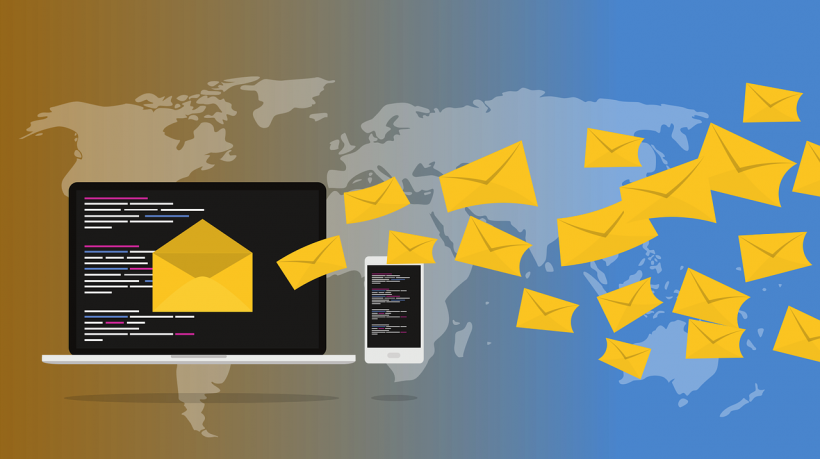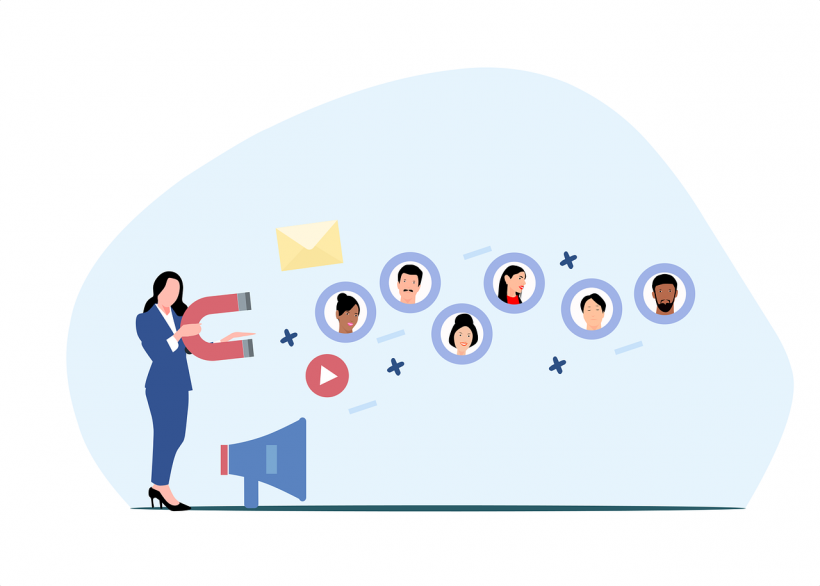Email marketing remains a potent tool in the B2B digital marketer's arsenal. Despite the rise of various new communication channels, email continues to deliver impressive ROI. To make the most of this channel, savvy marketers employ data-driven techniques for email marketing conversion rate optimization.

In this blog post, we'll explore how to increase email conversion rates using data-driven strategies and discover the email marketing magic that can boost your results.
Know Your Audience
Effective email marketing begins with understanding your audience. To boost email conversion rates, you must tailor your content to the specific preferences and needs of your subscribers. This means creating detailed buyer personas and segmenting your email list accordingly.
Segmentation allows you to send targeted and personalized content to different groups within your audience. By addressing their unique pain points and interests, you can significantly increase the relevance of your emails, which, in turn, boosts conversion rates.
Craft Engaging Subject Lines
Subject lines are the first thing your recipients see, and they play a pivotal role in whether your email gets opened or ignored. To optimize your email marketing conversion rates, you need to craft engaging subject lines that pique curiosity, generate excitement, or offer a clear value proposition.
A/B testing can help you refine your subject lines by experimenting with different strategies. Test variations, such as using personalization, urgency, or curiosity-driven approaches, to see which resonates best with your audience.
Create Compelling Content
Once your email is opened, the content within it must deliver value and engage your readers. Whether you're sending newsletters, promotional offers, or educational resources, your content should be visually appealing, easy to read, and relevant to the recipient.

Utilize data-driven insights to determine the type of content your audience prefers. Experiment with different formats, such as video, infographics, or interactive content, and use analytics to measure which formats yield the best results in terms of conversions.
Optimize Email Design
The design of your email plays a vital role in boosting conversion rates. A cluttered and unprofessional design can deter recipients from taking the desired action. Here are a few design tips to consider:
- Use responsive design to ensure your emails look great on both desktop and mobile devices.
- Implement a clear and visually appealing call-to-action (CTA) button that stands out.
- Keep your emails visually consistent with your brand's identity.

Data-driven design optimization means analyzing the performance of various design elements through A/B testing and refining your email templates based on what works best for your audience.
Test, Test, Test
A/B testing is a key data-driven technique to improve your email marketing conversion rates. It involves sending two slightly different versions of an email to different segments of your audience and measuring which one performs better. You can test various elements such as subject lines, CTA buttons, images, and content placement.
Continuous testing and optimization are essential for keeping your email campaigns relevant and effective. By analyzing the data and insights from your tests, you can make data-driven decisions to improve your conversion rates over time.
Personalize Your Emails
Personalization is a powerful tool in email marketing. According to studies, personalized emails can generate six times higher transaction rates. To boost conversions, use data-driven techniques to personalize your emails, including:
- Addressing recipients by their first name.
- Tailoring content recommendations based on past behavior.
- Sending personalized product recommendations.
- Including dynamic content that adapts to each recipient's preferences.
Email marketing automation tools can help you implement personalization at scale by utilizing customer data to deliver highly targeted and relevant emails.
Timing Is Everything
The timing of your emails can significantly impact their conversion rates. Sending an email at the right moment can make the difference between capturing a lead or being buried in a cluttered inbox. Data-driven techniques can help you identify the optimal send times for your specific audience.
Use email marketing analytics to study when your subscribers are most active and engaged with their inboxes. You can also experiment with different send times and analyze the open and click-through rates to refine your timing strategy continually.
Nurture With Drip Campaigns
Drip campaigns are an excellent way to keep your subscribers engaged over time and nurture them towards conversion. A drip campaign involves sending a series of pre-scheduled emails to a subscriber based on their actions or inaction.
By using data-driven insights, you can create drip campaigns that cater to different subscriber segments, guiding them through the customer journey with relevant content and offers.
Leverage Social Proof
Social proof is a psychological phenomenon where people tend to follow the actions of others, assuming that those actions reflect the correct behavior. In email marketing, leveraging social proof can boost conversions. You can include elements such as:
- Customer reviews and testimonials.
- Mentioning the number of subscribers or customers.
- Showcasing user-generated content or case studies.

By incorporating social proof into your emails, you can build trust and credibility with your audience, ultimately increasing conversions.
Monitor and Analyze
Data-driven email marketing is an ongoing process. You must regularly monitor and analyze your email campaigns' performance to spot trends and make necessary adjustments. Pay attention to key metrics like open rates, click-through rates, conversion rates, and unsubscribe rates.
Incorporate email marketing analytics tools to gain deeper insights into your audience's behavior and preferences. Adjust your strategy based on the data you collect to maximize your conversion rates.
Conclusion
In the world of digital marketing, email marketing remains a powerful channel for connecting with your audience and driving conversions. Email marketing conversion rate optimization is all about using data-driven techniques to enhance your campaigns continually. By knowing your audience, crafting engaging content, and leveraging A/B testing and personalization, you can unlock the magic of email marketing and boost your conversion rates. Remember to stay vigilant and analyze your results, making data-driven adjustments as needed to achieve long-term success in email marketing.
* This is a contributed article and this content does not necessarily represent the views of sciencetimes.com














